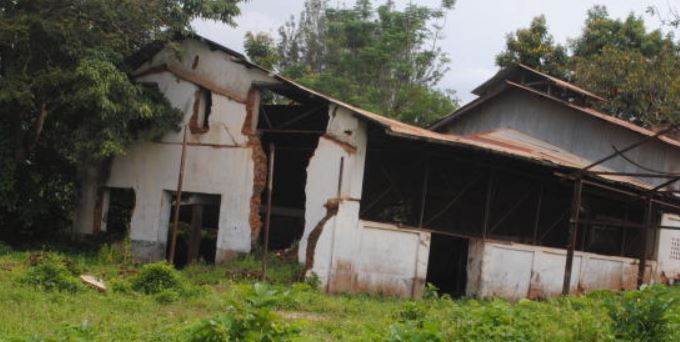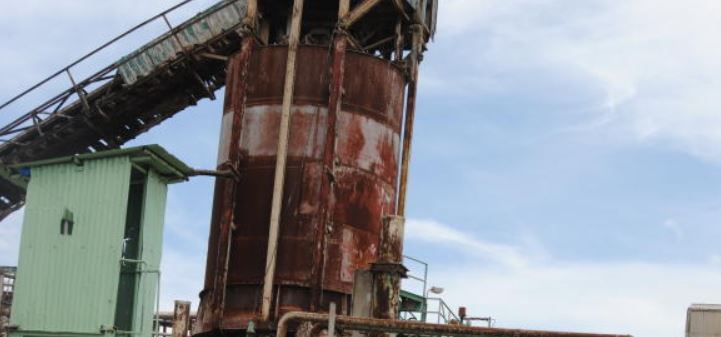 By
Standard Team
By
Standard Team

Started in 1848, Malakisi is arguably the oldest town in western Kenya and among the first industrial centres in the region.
Strategically located at the border between Bungoma and Busia counties, Malakisi faithfully served residents of Bumula, Sirisia and Teso North constituencies for more than three decades, fuelled by a vibrant cotton industry.
Between 1949 and 1966, more than 21,000 farmers were in the cotton-growing business. Back then, money flowed in Malakisi, especially after a ginnery was set up at its outskirts.
“Malakisi was the industrial capital of Bungoma. The ginnery used to manufacture Udo bar soap, Udo oil, animal feed, and cotton wool, among other products,” says Bishop Daniel Makecho.
Everything moved like clockwork: farmers were paid on time for their cotton, employees at the ginnery received their paycheques every month without fail.
In the 80s, Jiwas Bakery was established at Malakisi, pushing its
industrial status a notch higher. The bakery used to supply bread in
entire western Kenya, Kisumu, West Pokot, and across the border in
Uganda.
tobacco firms.
More investors streamed in. Mastermind Tobacco and British American Tobacco (BAT) set up shop in the town, pouring millions of shillings into factories, and recruited farmers to plant tobacco.
Soon, the town was upgraded to a town council with five wards: Sitabicha, Tamulega, Mwalie, Siboti/Netima and Napara.
And then the trouble started. Since then, the story of the rise and fall of Malakisi has reached mythical proportions.
It stirs a storm of debate on the town’s dead streets and abandoned structures, where monkeys and squirrels play hide and seek.
Some argue that Malakisi’s is a perfect example of the Midas curse; that the more investments it attracted, the more the town set itself up for self-destruction.
“Tobacco companies came in with a lot of money. Some farmers abandoned cotton and went for the tobacco business. This adversely affected the survival of the cotton ginnery,” says Crispus Mafura, 75, a resident.
Another resident, James Lutingi, reads politics in the fall of Malakisi. This, and poor Government policies. According to Mr Lutingi, the town’s rapid growth attracted both positive and negative forces that led to its fall.
“The collapse of Malakisi town dates back to the late 80s when insecurity, political interference and Government policies of imposing heavy taxes on the investors saw them close their factories and venture into other businesses elsewhere,” he says.
He might be right: Jiwas Bakery closed shop in 1989 and moved, first to Uganda, and then to Athi River.
Mastermind also moved.
In 1996, farmers acquired the assets of the cotton ginnery, and the Government quickly seconded managers to the Malaba-Malakisi Cooperative Cotton Ginnery.
Four years later, the ginnery collapsed and closed operations in the early 2000s. By 2005, scrap metal dealers had vandalised equipment at the ginnery.
Today, the reassuring sound of the cotton ginnery has since been replaced by the chatter of monkeys and the squeak of squirrels.
“We were left with nothing. All the machines were stolen. Many people lost jobs,” says Malaba-Malakisi Cooperative Cotton Ginnery General Manager, Willie Opili.
Malakisi fate was sealed.
Reversed fortunes.
About 50 kilometres away from what remains of Malakisi, stands another ghostly town that once throbbed with life.
Webuye’s is another tale of a ghost town where monkeys live in deserted buildings.

Webuye Pan-paper (PHOTO: Duncan Ochola)
Webuye used to be an industrial town by its right, thanks to State-owned Webuye Paper Mills. The mills collapsed under huge debt and with it the fortunes of the town that depended on it.
Today what remains of Webuye are little houses with crumbling white paint. They are rusty, dirty, and abandoned. The metal grills on their windows have since been pried off by vandals and sold for a song as scrap metal.
With the fall of the paper mill, businesses around it crumbled like a house of cards.
“The Pan Paper Clinic is gone, the Anglican Church Primary and Pan Paper Secondary schools that depended on the firm have collapsed,” says Maurice Wanjala, a former employee at the paper mills.
The privatisation of the mills (now called Rai Paper) has so far not reversed the fortunes of the town.
Many commercial buildings that had sprouted up to house the hundreds of employees now stand silent and vacant.
smuggling hot-bed.
And then there was Chepkube in Mt Elgon, a kilometre away from the Kenya-Uganda border.
In its heyday, Chepkube was synonymous with money. Lots of money. Back then, it was the centre of coffee smuggling. It was famous for the coffee boom of the late 70s when the cash crop was referred to as ‘black gold’.
It is believed that between 1976 and 1977, more than 30 per cent of Uganda’s coffee that was smuggled into Kenya through the porous border was auctioned at Chepkube.
When the Government moved in to stop the illegal business, Chepkube’s fate was sealed.
Many business people who had pitched tent at the border town transferred their businesses to Bungoma, Malaba, Kimilili, Kitale, Eldoret and Nairobi.
Today, Chepkube has been reduced to a small trading centre, which is struggling to come back to life with the help of the county government.
In the 1990s and early 2000, Mumias was western Kenya’s capital of culture and cash.
However, things changed as the fortunes of Mumias Sugar Company began to dwindle. Then Mumias, and the satellite towns around it, began their descent.
One of the most affected areas is Shibale shopping centre. Located a few metres from Mumias Sugar Company Complex, Shibale was the place where company workers and deep-pocketed sugar farmers spent their money day and night.
In early 2000s, one would pay Sh15,000 per month for a two-bedroom rental house at the centre.
Today, most of the houses are unoccupied, even after landlords slashed rent to as low as Sh2,000 per month.
Nothing captures the fall of Shibale better than the deserted Mteremko Pub, Florida Bar and Lodging, and the 2 Sisters Pub and Club - they were some of the most frequented recreational joints at the centre.
The three have since closed due to a lack of customers.
And so have financial institutions that had set up shop at the centre. All that is left at Shibale is a sorrowful sense of nostalgia.
“You could visit banks in Mumias and see farmers transacting business after harvest time; the night life was also vibrant,” says Haman Juma peering at the deserted streets of the the town centre.
On the southern side of Mumias stands what was once the capital of the former Butere/Mumias District, Butere.
Through it, a Kenya Railways line snaked through, bringing with it life and wealth.
Like other train station towns fed by the ‘Lunatic Express’, Butere once bustled with life.
And then in late 2007, the train started cutting down on daily trips between Butere and Kisumu to three trips a week: Tuesday, Thursday, and Sunday.
Things went south in 2008 when the train stopped using the route altogether.
Today, residents look at the old railway lines and sigh deeply.
“We had hotels here that used to serve the passengers who alighted from Mumias, but in late 1990s, things changed and then got worse in 2008,” says Boniface Imboko, 56.
Born and raised in Butere, Mr Imboko is certain that the train carried away the spirit of the once lively town.
Ten years down the line, what is left of Butere are old structures. The
railway itself has been overrun by long grass where cattle roam free.
After the halt of the train trips, railway workers and the traders who supplied their needs either moved on or changed jobs.
But residents remain hopeful that one day, the railway lines snaking under the grass will one day bring with them the sound of train’s return, especially with the ongoing construction of the Standard Gauge Railway.
The fact that the town’s economy depended heavily on sugarcane has only made matters worse.
The near-collapse of the sugarcane economy in the larger western region means that Butere’s fate is more or less sealed.
Still, it is not the only orphan of the railway. In Vihiga County, Mwibona shopping centre, about three kilometres from Luanda town, grew fast, feeding on Mwibona Railway Terminus.
Following the collapse of railway transport in early 2000, the town’s star is dimming fast. Mwibona Railway Terminus has been overrun by grass, its ramshackle offices now home to owls.




No comments :
Post a Comment